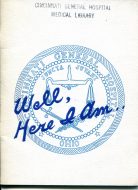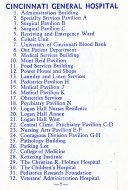Last year, I wrote a short history of the Cincinnati House of Refuge for a website that is currently under development by some UC Librarians which will make the data from ARB’s digitized Cincinnati House of Refuge records more easily searchable. While conducting research on the history of the House of Refuge, I became intrigued with how Cincinnati dealt with children whose parents for one reason or another were unable to care for them in the late 19th and early 20th centuries. The Cincinnati House of Refuge was designed as a facility for juvenile delinquents, but over time it also came to house children who had nowhere else to go. This fall I am beginning a research quest to piece together why this happened, and when and what alternatives to the House of Refuge were established. I will be writing a series of blog posts on what I find. This first one, though, will provide some background on Cincinnati’s House of Refuge. Continue reading
Tag Archives: Cincinnati History
What Do Martin Luther, a Hidden Paleontologist and German-Americans Have in Common? They are All in the Latest Source.
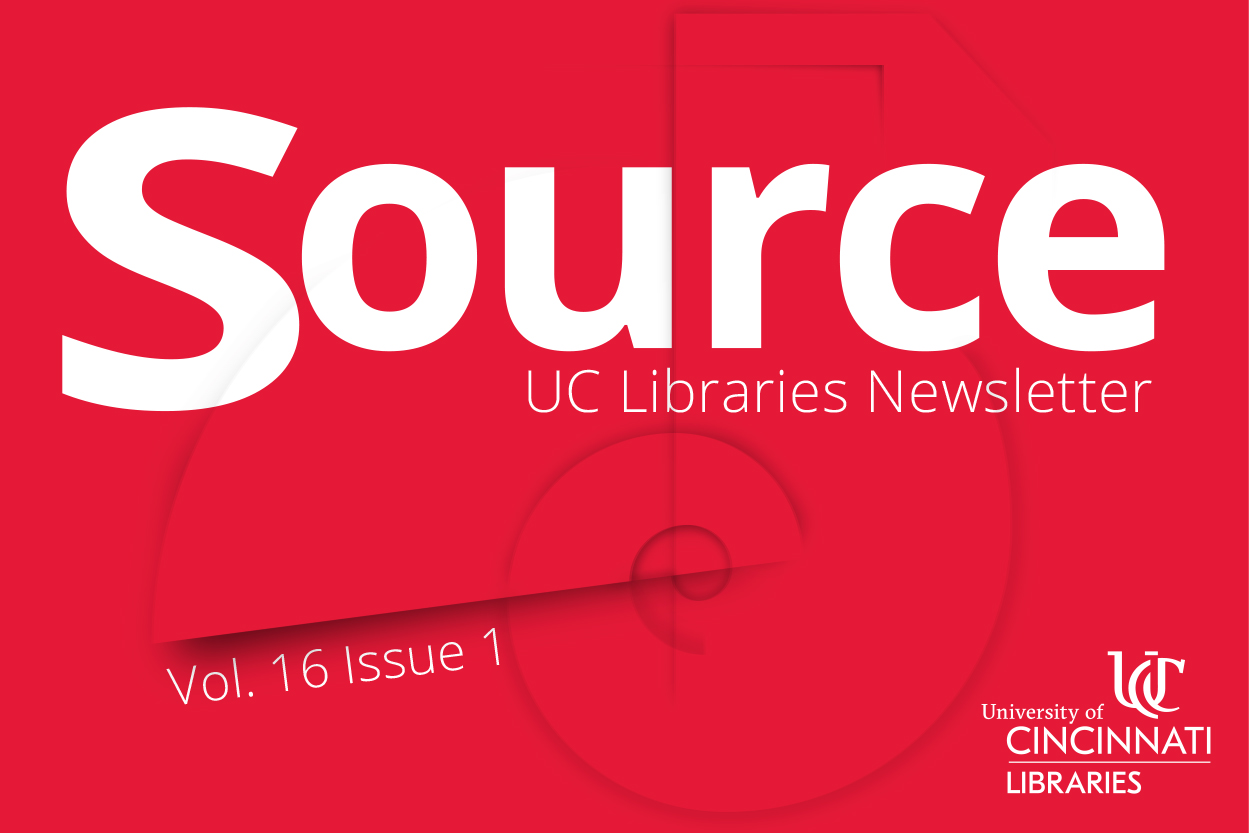 Read Source, the online newsletter, to learn more about the news, events, people and happenings in UC Libraries.
Read Source, the online newsletter, to learn more about the news, events, people and happenings in UC Libraries.
This latest issue of Source includes an article from Xuemao Wang, dean and university librarian, about UC Libraries core beliefs and their role on how we achieve our mission “to empower discovery, stimulate learning and inspire the creation of knowledge by connecting students, faculty, researchers and scholars to dynamic data, information and resources.” Kevin Grace, university archivist and head of the Archives and Rare Books Library, writes about a hidden bust of a famous 20th-century paleontologist and philosopher. Two important gifts are announced in this issues of Source – the first, an endowment from the Marge and Charles J. Schott Foundation for the German-Americana Collection; the second, a legacy gift from Sandra and Robert Cohan to benefit musical collections in the Albino Gorno Memorial Library. Exhibits highlighting the Archives and Rare Books Library’s Shakespeare Collection, the 500th anniversary of the Reformation and a book display for Hispanic Heritage Month are also featured in this issue of Source. In addition, a collaboration between the College of Medicine and the Donald C. Harrison Health Sciences Library to create a grant program to partner medical faculty with library informationists is announced.
Read these articles, as well as past issues, on the web at http://libapps.libraries.uc.edu/source/ and via e-mail. To receive Source via e-mail, contact melissa.norris@uc.edu to be added to the mailing list.
Shakespeare, Beethoven, Bearcats and More – All in Latest Issue of Source
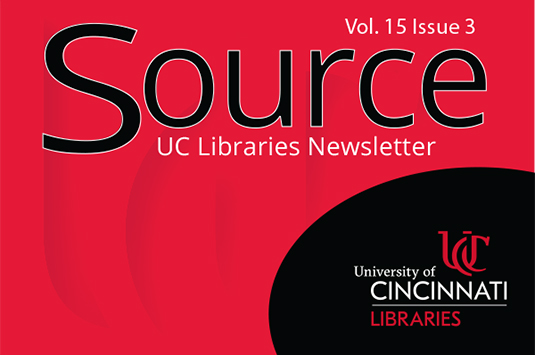 Read Source, the online newsletter, to learn more about the news, events, people and happenings in UC Libraries.
Read Source, the online newsletter, to learn more about the news, events, people and happenings in UC Libraries.
This latest issue of Source includes an article with Xuemao Wang, dean and university librarian, about how UC Libraries is utilizing Organizational Development to help bring about transformational change. Kevin Grace, university archivist and head of the Archives and Rare Books Library writes about the Enoch Carson Shakespeare Collection and how it will be a part of autumn 2017 Shakespeare celebrations in Cincinnati. Another great reading collection, the Cohen Enrichment Collection, is also featured in this issue.
Other articles in Source include an update on two UC Libraries Strategic Plan initiatives – eLearning and Digital Literacy and the Digital Scholarship Center, a recap of the most recent annual Cecil Striker Lecture and the addition of Beethoven’s “Life Mask” in the Albino Gorno Memorial (CCM) Library. Read these articles and more.
Source is available on the web at http://libapps.libraries.uc.edu/source/ and via e-mail. To receive Source via e-mail, contact melissa.norris@uc.edu to be added to the mailing list.
Shakespeare and Cincinnati’s Dramatic Festival
By: Sydney M. Vollmer, ARB Intern
In the spring of 1883, Cincinnati held its first Dramatic Festival at Music Hall, performing for a consecutive six days. The show had a lineup of performances of all sorts of dramatic works, with many of them holding Shakespearian titles. The festival was such a big deal that even the Chicago Tribune sent someone over to see what it was all about but unfortunately, the Tribune was less than impressed with Cincinnati’s efforts, claiming that the largeness of Music Hall drowned out the performances of almost all the actors. However, the critics did have some kind words for the orchestra as well as the performances of Hamlet and Julius Caesar. Apparently, these were the only two plays that were “great” enough to be worthy of performance while simultaneously using the space effectively. It certainly helped that in the role of Hamlet was the famous thespian James E. Murdoch.
History of the Philomathic Society of Cincinnati College
By Leah Wickett
ARB and Ohio Valley History Intern

Cincinnati College, 1819
Founded in 1819, Cincinnati College was home to two literary societies, the Philomathic Society and the Erophoebic Society (which had a bit of a rivalry between them).[1] Students of the College formed the Philomathic Society prior to the opening of the College, on January 18, 1818.[2] The Society’s aim was “for mutual literary improvement” and its first members were John Hough James, Junius James, George Mackey Wilson, Lemuel D. Howells, Robert T. Lytle, and Edward L. Drake.[3] Soon after its creation, the student members created a separate branch of the Philomathic Society for elected members consisting of William Henry Harrison, Thomas Peirce, Daniel Drake, Benjamin Drake, Peyton Short Symmes, as well as “other gentlemen, well known at that day… interested in literary affairs.”[4] On April 3, 1821, Daniel Drake invited the members of the Philomathic Society to join the public commencement of the Medical College being held the following day at Cincinnati College’s Chapel.[5] In the early part of 1821, the Society created a semi-monthly paper called The Olio, which featured local literature and was “the first effort on the part of a literary society, in the West, for development of poetic ability.”[6] The publication contained historical essays, articles, poetry, and the occasional “humorous essay.”[7] The Olio, published and edited by John H. Wood and Samuel S. Brooks, ended after just one year of publication.[8] Continue reading
Annual Cecil Striker Society Lecture May 4 to Highlight African American Doctors in Cincinnati
The Henry R. Winkler Center for the History of the Health Professions and the Cecil Striker Society for the History of Medicine will host the Cecil Striker Society Annual Lecture from 5-7:30 p.m. on Thurs, May 4, in the Kresge Auditorium, Medical Sciences Building, 231 Albert Sabin Way.
This year’s lecture will consist of a panel discussion by prominent African American physicians and is titled “African American Physicians in Cincinnati: Past, Present and Future.” Moderated by Dr. Elbert Nelson, the panelists will include Drs. Chester Pryor, Charles Dillard, Camille C. Graham and Christopher Lewis.
The evening will include the talk from 5-6 p.m., followed by Q&A and a reception at 6:30 p.m. In addition, an exhibit of the same name will be on display in the Lucas Board Room in the Winkler Center.
The Cecil Striker Lecture is free and open to the public, but RSVP’s are requested to (513) 558-5120 or chhp@uc.edu. Continue reading
Smoking Permitted and No Tipping Allowed!?! Hospital Information for Overnight Patients, 1958
The following post was written by Winkler Center assistant archivist, Nina Herzog. All images courtesy of the Henry R. Winkler Center for the History of the Health Professions
Without a doubt, checking into and staying at hospitals is a lot different today than it was over a half century ago. Computerized check-ins, televisions in rooms and bans on smoking, etc. have all improved the patient experience. The images below were taken from an informational booklet given to patients at the Cincinnati General Hospital (CGH) in 1958.
The instructive pamphlet titled, “Well Here I Am,” provides the incoming patient with information on subjects ranging from check in, dining hours, and visitor information to hospital maps, directions, and much more.
The Passing of Henry Heimlich (1920-2016)
Gallery

This gallery contains 7 photos.
The Winkler Center was saddened over the weekend to learn of the passing of Dr. Henry J. Heimlich. In lieu of writing another obituary or quick biography like the ones that can be read here at the Cincinnati Enquirer or … Continue reading
Donald and Marian Spencer: Lives of Love and Social Justice
By: Sam Whittaker, History Department Intern
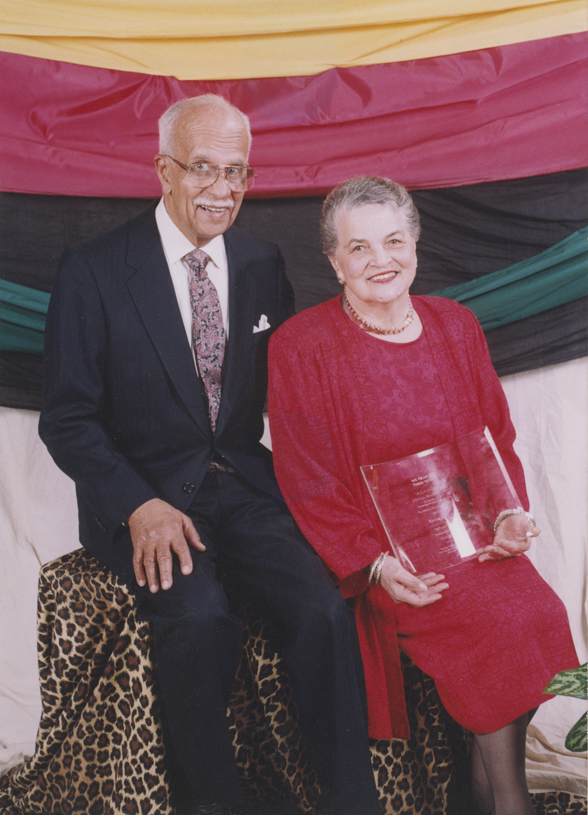 The Archives and Rare Books Library recently received a new collection of papers from Marian and Donald Spencer. For over fifty years, the Spencers fought for educational equity and equal rights with organizations such as the NAACP, the U.S. Commission on Human Rights Ohio Board, and the Cincinnati Board of Education. While processing the papers of Marian and Donald Spencer, I learned a vast amount about their groundbreaking electoral campaigns, keynote speeches, court cases, and community boards. However, I also came to know them as people. Donald and Marian Spencer met while they were both students at the University of Cincinnati, married in 1940, and raised two boys. They spent a great deal of their nearly 70 years of marriage in Cincinnati fighting for social justice and equality in the community. Continue reading
The Archives and Rare Books Library recently received a new collection of papers from Marian and Donald Spencer. For over fifty years, the Spencers fought for educational equity and equal rights with organizations such as the NAACP, the U.S. Commission on Human Rights Ohio Board, and the Cincinnati Board of Education. While processing the papers of Marian and Donald Spencer, I learned a vast amount about their groundbreaking electoral campaigns, keynote speeches, court cases, and community boards. However, I also came to know them as people. Donald and Marian Spencer met while they were both students at the University of Cincinnati, married in 1940, and raised two boys. They spent a great deal of their nearly 70 years of marriage in Cincinnati fighting for social justice and equality in the community. Continue reading
Julia Marlowe – A Cincinnati Girl Learns To Be Juliet
By: Sydney Vollmer
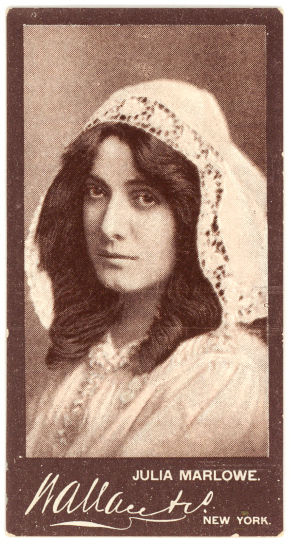 On August 17, 1866, Sarah Frances “Fanny” Frost was born in Caldbeck, England to John and Sarah Frost. As Julia Marlowe, she died at age 84 in New York City’s Plaza Hotel. Between those two events, she discovered passion, love (multiple times), and fame.
On August 17, 1866, Sarah Frances “Fanny” Frost was born in Caldbeck, England to John and Sarah Frost. As Julia Marlowe, she died at age 84 in New York City’s Plaza Hotel. Between those two events, she discovered passion, love (multiple times), and fame.
The future Shakespearean actress was born into a relatively normal family. She had four siblings, three sisters and a brother and her parents owned a general store while also working in the trades of needlework and boot making. Her father sometimes got drunk and her mother always got frustrated with him. At the age of 5, though, all of that “normalcy” changed for Marlowe. It was the year that her father whisked the family away to America. Plenty of people were immigrating to America during the 1870s, but Marlowe’s father did so to stay out of trouble. During an impromptu horse race between her father—where he was most likely drunk— and one of their neighbors, Mr. Frost allegedly took out his competitor’s eye with his whip. Knowing that he would surely face prosecution if he stayed, he immediately took his wife and children to America. Once arrived, they first settled in Kansas, but soon moved to Portsmouth, Ohio with the new surname “Brough,” which was the maiden name of Julia’s mother. Later on, the family would find out that the competitor had been playing a cruel joke and there had not been any reason to leave so urgently. Continue reading




